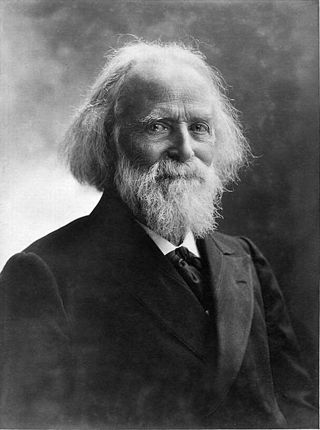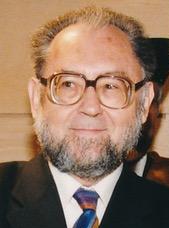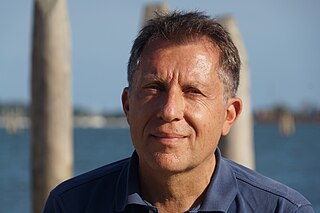
Urban geography is the subdiscipline of geography that derives from a study of cities and urban processes. Urban geographers and urbanists examine various aspects of urban life and the built environment. Scholars, activists, and the public have participated in, studied, and critiqued flows of economic and natural resources, human and non-human bodies, patterns of development and infrastructure, political and institutional activities, governance, decay and renewal, and notions of socio-spatial inclusions, exclusions, and everyday life. Urban geography includes different other fields in geography such as the physical, social, and economic aspects of urban geography. The physical geography of urban environments is essential to understand why a town is placed in a specific area, and how the conditions in the environment play an important role with regards to whether or not the city successfully develops. Social geography examines societal and cultural values, diversity, and other conditions that relate to people in the cities. Economic geography is important to examine the economic and job flow within the urban population. These various aspects involved in studying urban geography are necessary to better understand the layout and planning involved in the development of urban environments worldwide.

Jacques Élisée Reclus was a French geographer, writer and anarchist. He produced his 19-volume masterwork, La Nouvelle Géographie universelle, la terre et les hommes, over a period of nearly 20 years (1875–1894). In 1892 he was awarded the Gold Medal of the Paris Geographical Society for this work, despite having been banished from France because of his political activism.

Political geography is concerned with the study of both the spatially uneven outcomes of political processes and the ways in which political processes are themselves affected by spatial structures. Conventionally, for the purposes of analysis, political geography adopts a three-scale structure with the study of the state at the centre, the study of international relations above it, and the study of localities below it. The primary concerns of the subdiscipline can be summarized as the inter-relationships between people, state, and territory.

Torsten Hägerstrand was a Swedish geographer. He is known for his work on migration, cultural diffusion and time geography.

Cultural geography is a subfield within human geography. Though the first traces of the study of different nations and cultures on Earth can be dated back to ancient geographers such as Ptolemy or Strabo, cultural geography as academic study firstly emerged as an alternative to the environmental determinist theories of the early 20th century, which had believed that people and societies are controlled by the environment in which they develop. Rather than studying predetermined regions based upon environmental classifications, cultural geography became interested in cultural landscapes. This was led by the "father of cultural geography" Carl O. Sauer of the University of California, Berkeley. As a result, cultural geography was long dominated by American writers.
Time geography or time-space geography is an evolving transdisciplinary perspective on spatial and temporal processes and events such as social interaction, ecological interaction, social and environmental change, and biographies of individuals. Time geography "is not a subject area per se", but rather an integrative ontological framework and visual language in which space and time are basic dimensions of analysis of dynamic processes. Time geography was originally developed by human geographers, but today it is applied in multiple fields related to transportation, regional planning, geography, anthropology, time-use research, ecology, environmental science, and public health. According to Swedish geographer Bo Lenntorp: "It is a basic approach, and every researcher can connect it to theoretical considerations in her or his own way."

The sociology of space is a sub-discipline of sociology that mostly borrows from theories developed within the discipline of geography, including the sub fields of human geography, economic geography, and feminist geography. The "sociology" of space examines the social and material constitution of spaces. It is concerned with understanding the social practices, institutional forces, and material complexity of how humans and spaces interact. The sociology of space is an inter-disciplinary area of study, drawing on various theoretical traditions including Marxism, postcolonialism, and Science and Technology Studies, and overlaps and encompasses theorists with various academic disciplines such as geography and architecture. Edward T. Hall developed the study of Proxemics which concentrates on the empirical analysis of space in psychology.

Jean-Bernard Racine was a professor of geography at the Institute of Geography, Faculty of Geosciences and Environment of the University of Lausanne (UNIL) and at HEC Lausanne Business School. Racine received his first PhD in geography from the University of Aix-en-Provence (1965) and his State PhD in geography (1973) from the University of Nice. Jean-Bernard Bernard was a professor at the University of Sherbrooke between 1965 and 1969, and at the University of Ottawa from 1969 to 1973.
Hans-Georg Bohle was a German geographer and international development researcher.

Roger Brunet is a French geographer.
Hans Bobek was an Austrian geographer. After his studies in geography at the University of Innsbruck, where Johann Sölch—a pupil of Albrecht Penck in Vienna—was his main teacher, he became professor of geography at the University of Vienna (1951–1971). Bobek is noted for his works on cultural and social geography, urban geography as well as on the regional geography of the Near and Middle East, then primarily known as the "Orient". He was, among others, the author of Iran: Probleme eines unterentwickelten Landes alter Kultur. His theory about rural and urban interactions was called Rentenkapitalismus; another important output was the theory of cultural steps (Kulturstufentheorie).

Anne Buttimer was an Irish geographer. She was emeritus professor of geography at University College, Dublin.
RECLUS is a public interest group founded in 1984, associated to the Maison de la géographie de Montpellier. The acronym translates to "Network for the study of changes in the locations and the spatial units" and was coined as a tribute to Élisée Reclus, the 19th-century French geographer, author of the New Universal Geography, a treatise in 19 volumes, published by Hachette, between 1876 and 1894. One of the most important ideas of Reclus is indeed the trans-boundary region, which is retaken by Roger Brunet, the founder of the RECLUS group and its director until 1991, in order to formulate the concept of the European Megalopolis.

Jacques Lévy is a professor of geography and urbanism at the School of Architecture, Civil and Environmental Engineering of the École Polytechnique Fédérale de Lausanne (EPFL). He is the director of Chôros Laboratory and of the Doctoral Program in Architecture and Science of the City. He is the cofounder of the scientific journal EspacesTemps.net. He published in French, along with Michel Lussault, the dictionary of geography and space of societies, Dictionnaire de la géographie et de l’espace des sociétés.He has contributed to in the epistemological and theoretical reform of geography as a science of the spatial dimension of the social, open to the social sciences and philosophy. Starting from political geography, he has most notably explored the city, urbanity, Europe and globalization. He works also for the introduction of non-verbal languages, especially audio-visual languages, at all levels of research. In 2013 he made a feature film, Urbanity/ies, which is intended as a manifesto for scientific film.

Maximilien Sorre, known as Max Sorre, was a French geographer whose work was mainly in the areas of biological and human geography.
Erdkunde – Archive for Scientific Geography is a quarterly peer-reviewed academic journal of geography published at the University of Bonn (Germany). Articles have been published in English since 2008. Since September 2016, the journal is available online and open access. All articles are available for free immediately and publication fees are not charged. Archived volumes are available via the journal's website, but are also made available via JSTOR. The printed version of the journal is distributed worldwide via subscriptions. Erdkunde publishes scientific articles covering the whole range of physical geography and human geography. The journal offers state of the art reports on recent trends and developments in specific fields of geography and comprehensive and critical reviews of new geographical publications. High-quality maps and large-format supplements are of particular importance. Since 2021, the journal offers the option of publishing data publications.

Jean Brunhes was a French geographer. His most famous book is La géographie humaine. He was the director of The Archives of the Planet, an international photographic project sponsored by Albert Kahn. He was the father of Mariel Jean-Brunhes Delamarre, his daughter and early research partner.
Benno Werlen is a Swiss geographer who is known for his action-centred approach to human geography and his concept of a Geography of Everyday Regionalisations. He has been the founder und holder of the UNESCO Chair on Global Understanding for Sustainability at the Friedrich Schiller University, Jena, since 2018. Until 2018 he held the chair for social geography at the same university. Werlen is a fellow of the World Academy of Art And Science—initiated by Albert Einstein—and the Max Weber Centre for Cultural and Social Studies (Erfurt), since 2019 an elected member of the Academia Europaea and from 2024 its chairperson for »Human Mobility, Governance, Environment and Space«.

Lev Ilyich Mechnikov was a Russian geographer, sociologist and anarchist theorist.











